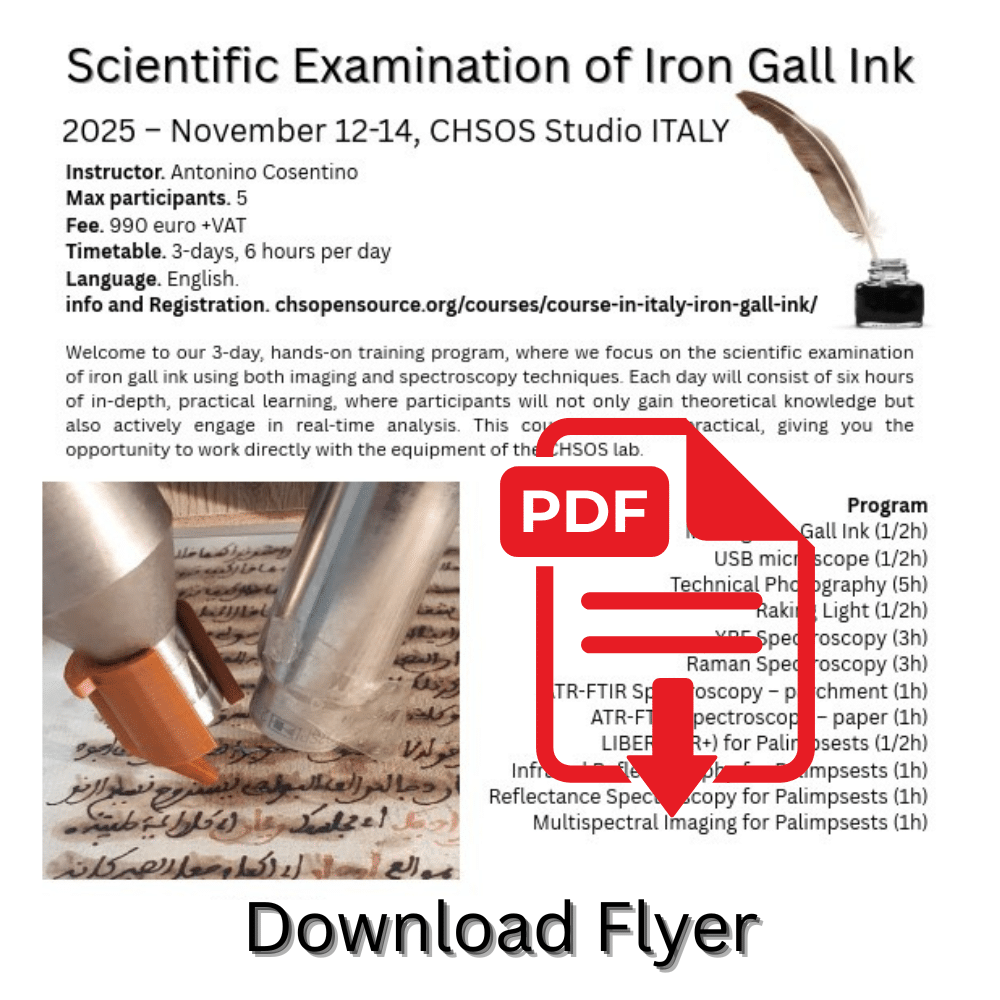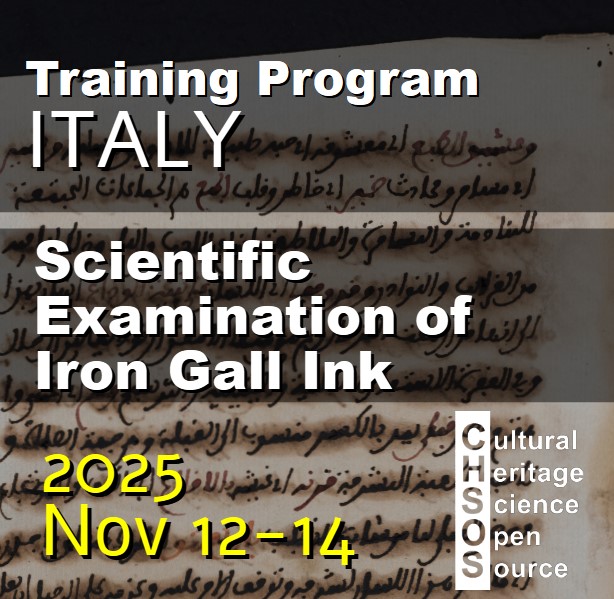Reflectance Transformation Imaging (RTI)
Reflectance Transformation Imaging (RTI) is a computational photographic technique used in a number of fields related to art examination and documentation. RTI provides a virtual and enhanced visualization of an object’s surface where the lighting direction can be changed interactively and enhancements can be performed to make surface’ details more visible. It relies on the Polynomial Texture Map method which is an image-based representation of the object’s surface achieved by capturing the object under lighting from different directions. It is used to visualize tiny incisions in paintings and historical prints as well as to document highly reflective objects such as coins.

Reflectance Transformation Imaging (RTI) is used to document tiny features, such as incisions in paintings and historical prints techniques. RTI is used in a number of fields related to art and archaeology examination because it provides a virtual and enhanced visualization of an object’s surface. This is an example of RTI documentation of historical graffiti in catacombs.







